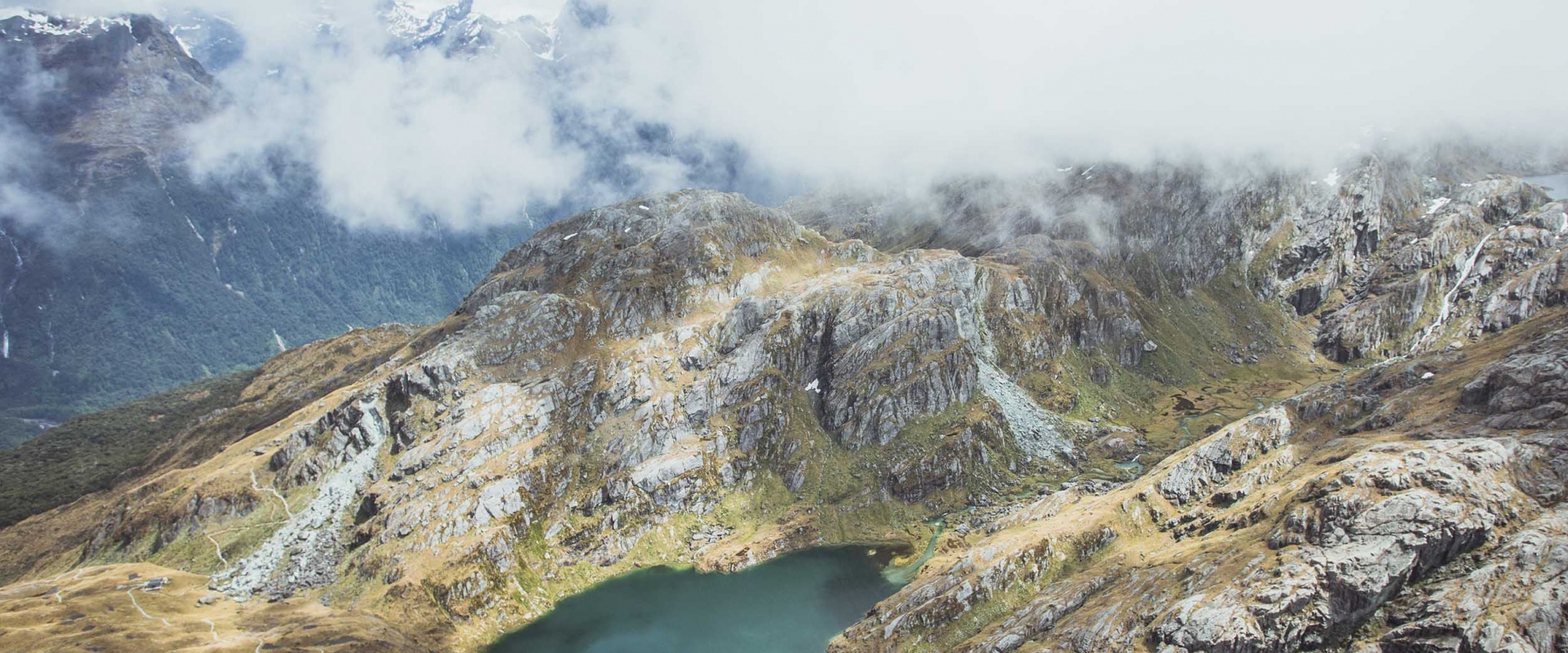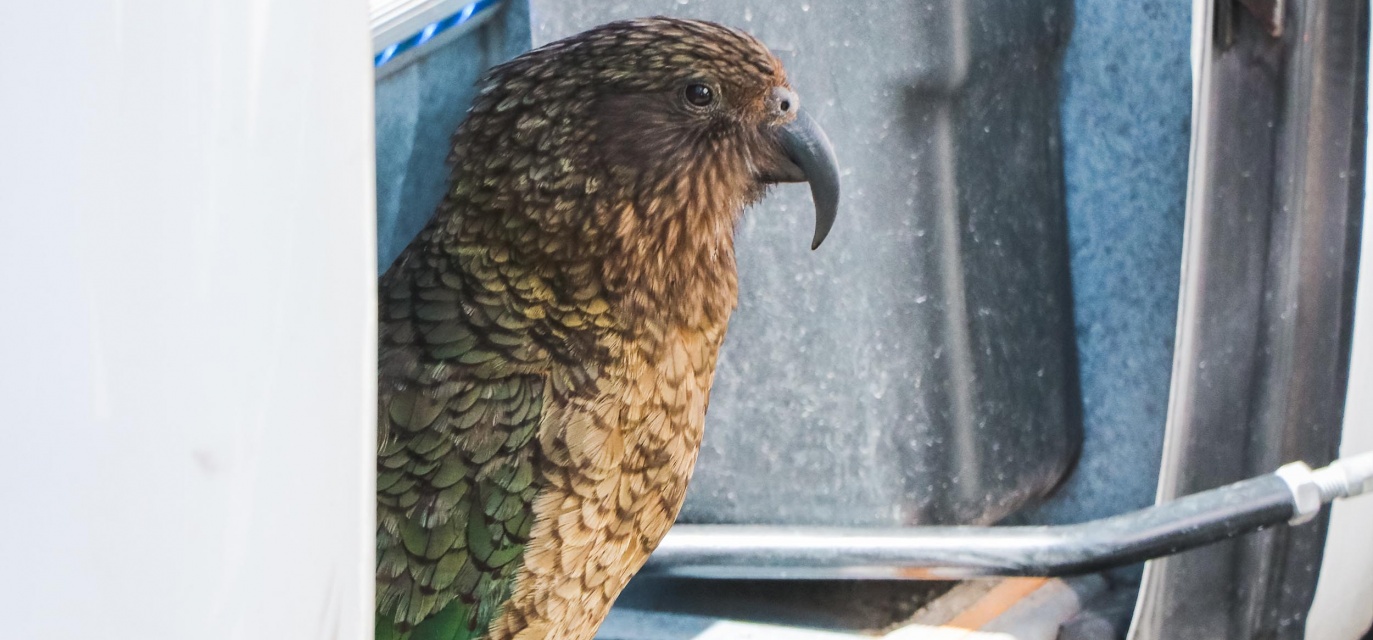The hermit of Milford Sound and the start of the tourist trade
The first European settler in Milford Sound was Donald Sutherland, a Scottish explorer. He made his home at the bottom of Bowen Falls, making the most of the view of Mitre Peak. The three huts he built after arriving in 1877 became known as the ‘City of Milford’.
Sutherland lived as a hermit in Milford Sound, spending his time painting, watching birds, or searching for precious gems. He also explored the area: Sutherland Falls is named after Donald, who came across them in 1880.
He eventually married a woman named Elizabeth Samuels. Elizabeth was a resourceful and determined woman - she also had money. Donald had been squatting in Milford since his arrival, so Elizabeth bought land to make their existence there official. They built Milford's first hotel, the Chalet, on the site to accommodate the first tourists arriving on the newly opened Milford Track. In the first year of business (1888-89) 40 people came to see Sutherland Falls. To keep up with this growing tourist trade, Donald started caring for pigs, cattle, and sheep.
Donald Sutherland died in Milford on 24 October 1919. Elizabeth was alone at the time and being too small to lift his large body alone, had to wait for five weeks before a ship arrived, and she could finally bury him.
Elizabeth continued to live in Milford and accommodate guests in the Chalet over summer until she died on 10 December 1923.
Finding the Mackinnon Pass
Before pākehā 'discovered' the Milford Track, it is thought that this inland route between Te Anau and Piopiotahi was used by Māori. They would make trips to Milford Sound to collect tangiwai pounamu, an ancient form of the greenstone found only in this fiord. Maori used it for weapons, tools, and trade.
Europeans only started using the Milford Track 74 years after the sound was first discovered. Mackinnon Pass was discovered in 1888, opening up the area to tourists and travellers.
Scotsman Quintin McKinnon was the one who found the pass and gave it his name.
He gave his name to the pass and became the first Milford Track guide. The route soon became well worn by the feet of visitors, who, prior to the route’s discovery, could access the ‘eighth wonder of the world’ only by ship.
McKinnon died four years later – he was last seen sailing on Lake Te Anau in November 1892. A search party recovered his wrecked ship and belongings, but his body was never found, and a memorial now stands at the pass.
The arrival of sandflies, or little devils
In Maori folklore, the goddess of death, Hinenui-te-Po, released sandflies – called te namu, or little devils – into Milford Sound in an attempt to keep people away from such a beautiful place. She feared the landscape created by Tu-te-raki-whanoa was so glorious that people would want to live there forever.
The story goes that she first released the critters at Te Namu-a-Te-Hine-nui-te-po - called Sandfly point today.
She might not have prevented people from living in Milford eventually, but she definitely made it more difficult! Captain Cook himself ran into sandflies in Dusky Sound and was not impressed. He said of his time in Dusky Sound:
“The most mischievous animals here are the small black sand-flies, which are very numerous and so troublesome that they exceed everything of the kind I ever met with. Wherever they bite they cause a swelling, and such an intolerable itching that it is not possible to refrain from scratching, which at last brings on ulcers like the small-pox.”
Learn from Captain Cook's experience with the little devils. Don’t forget to pack your insect repellent!
A 42 egg whio omelette
One of the more painful truths that emerge from stories of early Milford Sound is how quickly European settlers eradicated local wildlife. Between the excessive hunting of native birds - early accounts tell of the now endangered kākā, kākāpō, and kea being shot for dinner - and the arrival of pests, native bird song in Milford's forests began to fall silent. One of the more cringe-worthy stories is of settler Quintin McKinnon (1851-1892), who supposedly whipped up an omelette using 42 whio eggs. Today, less than 3000 whio, a rare blue duck, remain.
It wasn't just birds who suffered. Along Fiordland's coast, Europeans settled to hunt first fur seals, and then whales. The fur trade burnt out within 30 years, as eventually there weren't any seals left to hunt. Whales suffered a similar fate.
As early as 1891, scientist James Richardson spoke about the rapidly declining populations of endemic species, saying “It would have been deemed impossible that either kākāpō, kiwi or weka could become rare during the present century, but 30 years ago the same might have been written regarding the native quail. Yet today, the quail is, I believe, absolutely extinct.”
The fight to save Milford's wildlife carries on today.
Wild moose in Milford Sound
Europeans didn't just bring rats, stoats, and rabbits with them. They also brought moose. In 1910, 10 moose were shipped all the way from Canada at the request of the Prime Minister at the time, Sir Joseph Ward. The moose - four males and six females - were released at Dusky Sound and left to fend for themselves there. The plan was to turn New Zealand into one giant game reserve. That plan never quite materialised, and no one knows exactly what happened to the moose. What we do know is that some, if not all of them, survived and bred in Fiordland for years.
Verified photos of them were taken in 1952. As recently as 1995, one of the legendary Fiordland moose was caught on camera. And now, more than a century after they were first released, keen hunters and curious locals still gossip about the occasional large, dark, antlered shape moving through Fiordland's forests. If you keep your eyes peeled on your trip to Milford Sound, you might just spot one of the elusive Fiordland moose.


